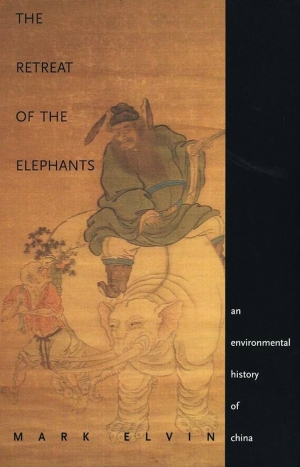Yale University Press
Hugh White reviews 'After The Neocons: America at the crossroads' by Francis Fukuyama and 'Ethical Realism: A vision for America’s role in the world' by Anatol Lieven and John Hulsman
Beyond American failure in Iraq lies a second, deeper failure. America’s Iraq project was always intended by its proponents not just to fix Iraq and transform the Middle East, but also to demonstrate a new grand policy concept for the twenty-first century. This was the Bush Doctrine, enshrining the now-familiar ideas of the neo-conservatives: America’s power, especially its military power, is omnipotent; its values and institutions are universally desired and universally applicable; hence America’s destiny – and after 9/11 even its very survival – requires it to use this immense power, pre-emptively and unilaterally if necessary, to reshape the world in America’s image. The neo-cons themselves called it a vision for a New American Century.
... (read more)Luke Morgan reviews 'Bellini, Giorgione, Titian, and the Renaissance of Venetian Painting' by David Alan Brown et al.
Some years ago, Robert Hughes bemoaned the capitulation of art museums and galleries to ‘the whole masterpiece-and-treasure syndrome’. Although made in the 1980s, Hughes’s point may still be valid, especially if the number of recent exhibitions with the word ‘master’ in their titles is anything to go by. A quick check reveals that, in Australia, the National Gallery of Victoria is particularly fond of the word. In Melbourne last year, we had ‘Dutch Masters from the Rijksmuseum, Amsterdam’ and ‘Albrecht Dürer: Master of the Renaissance’. In 2004 the NGV put on ‘The Impressionists: Masterpieces from the Musée d’Orsay’.
... (read more)John Frow reviews ‘Adorno: A political biography’ by Lorenz Jäger (translated by Stewart Spencer) and ‘The Cambridge Companion to Critical Theory’ edited by Fred Rush
In the winter of 1968–69 the buildings of the Institute for Social Research at the University of Frankfurt – the symbolically resonant home of what had come to be known as the Frankfurt School – were occupied by students. The police were called in, and Theodor W. Adorno, one of the great radical theorists of the twentieth century, pressed charges against a young man whose doctoral work he was supervising. Two months later, a group of women forced their way into Adorno’s lecture, handed out leaflets proclaiming that ‘Adorno as an institution is dead’, and ‘surrounded him, strewing flowers, performing a dumb show and … baring their breasts’. In action after action, the contempt of the students for the radical theorists of an older generation was made clear.
... (read more)Alastair Jackson reviews 'The Opera Lover's Companion' by Charles Osborne
Charles Osborne, who was born in Brisbane in 1927 and moved to London in 1953, is a prolific writer, broadcaster and opera critic. His latest offering, The Opera Lover’s Companion, sets out to guide its reader through 175 of the world’s most popular operas. Osborne correctly states that ‘the staples of the operatic diet today are the major works of five great composers – Mozart, Verdi, Wagner, Puccini, and Strauss’ – and certain works by other luminaries. The operas of sixty-seven composers are included, but that core quintet gives us almost a third of the operas in this volume. Interestingly, in opera’s four hundred-year history, the vast majority of the most frequently performed works fall within the period between Mozart’s first featured opera, Mitridate, rè di Ponto (1770) and Strauss’s last, Capriccio (1942).
As with The New Kobbé’s Opera Book (1997), the list reveals a re-evaluation of many previously neglected operas, in particular some lesser-known works of Handel, Rossini, Donizetti, Massenet, and Strauss, which have enjoyed a renaissance in recent years. Doubtless this also reflects the dearth of modern operas and the scarcity of contemporary composers who know what their audiences want. Any opera company ignoring box office appeal does so at its peril, and a book such as this should be mandatory reading.
... (read more)Tim Rowse reviews ‘Malinowski: Odyssey of an anthropologist 1884–1920’ by Michael W. Young
Of all the social scientists ever supported by an Australian government, Bronislaw Malinowksi had the biggest impact on twentieth-century thought. His ‘functionalist’ theory of culture in the early 1920s – using evidence that he had collected in Australia’s New Guinea territories during World War I – challenged evolutionism. Instead of ranking cultures on a developmental scale from ‘primitive’ Them to ‘civilised’ Us, social science would strive to understand each culture in its own terms, as a particular set of strategies for meeting universal material needs and psychological drives. Malinowski proposed a humanism that could stare Freud in the face and accommodate the moral catastrophe of 1914–18.
... (read more)Antonia Finnane reviews ‘The Retreat of the Elephants: An environmental history of China’ by Mark Elvin
The elephant is now a rare beast in China, where the ox and pig reign supreme among quadrupeds. Precisely because elephants are scarce, The Retreat of the Elephants presents readers with an unforgettable metaphor for the environmental history of China. As Chapter Two of the book shows, that history featured a 3000-year struggle for habitat between elephants and humans. The victory of the humans involved a transformation of the landscape through extensive deforestation, which denuded first the vast plains of north China and then the valleys and hills of the south. The elephants were burnt by the sun.
... (read more)





